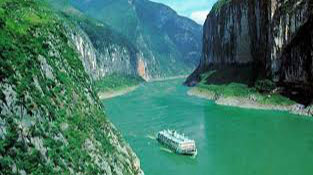China’s Grand Canal is the earliest and largest artificial canal in the world. It is about 1,800 kilometers long, starting from Beijing in the north and ending in Hangzhou in the south, running through five major water systems: Haihe River, Yellow River, Huaihe River, Yangtze River and Qiantang River, connecting many important cities along the route. In ancient times, it brought prosperity and wealth to the coastal cities like Xuzhou, Yangzhou, Wuxi, Suzhou, and Hangzhou. In addition, it also promoted cultural exchanges between the north and the south, and spreaded the Peking Opera and Pingtan along the route.
Nowaday, the Grand Canal is used for sending fresh water to the northern provinces like Shandong, Hebei, Tianjin, and Beijing. It is the eastern route of the canal system called South North Water Transfer, sending water to northern China. In addition, the Grand Canal is still used in commodity and goods transportation because river flight rate is much lower than land flight rate. It is still playing a role in the commerce of the nation.




